By Lexie Beach, STC Communications Coordinator
Back in November, I had the opportunity to participate in a fun Citizen Science Field Excursion organized by STC staff at the Barrier Island Center (BIC) in Melbourne Beach, FL. For those who are unfamiliar with the BIC, it is an environmental education center located in the heart of the Archie Carr National Refuge that is jointly managed by STC and Brevard County’s Environmentally Endangered Lands Program. With staff and volunteers based year-round at the BIC, STC conducts a variety of programs in partnership with the local community that are building coastal awareness and stewardship for the Carr Refuge and the entire barrier island ecosystem. Activities include guided sea turtle walks, beach clean-ups, and dune restoration projects, just to name a few. The BIC also hosts visiting school groups as well as local residents and tourists and is the site of STC’s annual Tour de Turtles release each summer. The facility and its exhibits are open to the public for free and many of the programs are offered for little to no cost.
Along with a group of 20 budding conservationists, I spent a beautiful fall day exploring Pelican Island National Wildlife Refuge, feeding sea horses at the Vero Beach Marine Lab, checking oyster gardens in the Indian River Lagoon and learning about citizen science projects from around the world. We were also treated to several special guest presentations over a picnic lunch in Sebastian Inlet State Park, which looked especially picturesque that day.
The morning began with a short shuttle ride to Pelican Island National Wildlife Refuge, America’s first National Wildlife Refuge! After learning about the Refuge’s history from an extremely-knowledgeable volunteer, we were free to roam and explore the scenic trails while trying to spot local wildlife. More than 30 species of birds use Pelican Island as a rookery, roost, feeding ground, or loafing area and 16 different species of birds nest there. Several species of sea turtle as well as Florida manatees and bald eagles are also occasionally spotted within the Refuge.
Our next stop was the Florida Institute of Technology Vero Beach Marine Lab where we learned how we could help save sea horses through a citizen science initiative. We even got an up-close look at newborn sea horses as well as several other species, such as clown fish, which are bred at the Lab for aquaculture use. During our sea horse presentation, I realized that sea horses and sea turtles actually share many similarities when it comes to the threats they are faced with. Water pollution, shrimp trawling, and harvest for consumption in the Asian market are all major threats to these charismatic species which make their home right here in Florida waters.
Other highlights of the day’s adventure included a great presentation by STC Board Member, Peggy Cavanaugh, whose passion about online citizen science projects was positively contagious! Husband and wife team Paul and Anne Lins also spoke about their incredible experiences as volunteer marine mammal responders and sea turtle stranding rescues. We finished the day out on the dock of Hog Point Cove Sanctuary learning about the oyster gardens that are deployed there to help gauge the health of the Indian River Lagoon.
This particular field excursion was just one of the many environmental stewardship workshops the BIC organizes each month. The majority of these programs are free, with some of the more involved ones costing a small donation. This Citizen Science Field Excursion also included lunch and transportation from the BIC. A schedule showing all the activities taking place each month at the BIC can be accessed on the STC website and BIC Facebook page, so you can be on the lookout for programs that interest you.
As the human population on Brevard County’s coast continues to grow, STC and the BIC will play an increasingly important role in protecting the fragile barrier island and its globally important sea turtle nesting beaches by educating the surrounding community and providing hands-on learning opportunities for all ages. To learn more about the BIC, visit http://stcturtle.org/barrierislandcenter.php
STC’s fifth annual Sea Turtles Dig the Dune workshop brought together more than 150 volunteers at the Barrier Island Center (BIC) on Saturday, Feb. 7 to plant nearly 7,000 sea oats throughout the Archie Carr National Wildlife Refuge (ACNWR).
The ACNWR stretches 20.5 miles between Melbourne Beach and Wabasso Beach along Florida’s east coast and with recent climate changes, severe weather and sea level rise, erosion is becoming a critical issue for the area.
The dune habitat not only protects our coastal properties, but also provides important nesting locations for the three species of endangered sea turtles found in the ACNWR, including Loggerheads, Greens and Leatherbacks.
A family new to Barrier Island joins the plantingSTC gave coastal residents and communities free sea oat seedlings and planting permits during the workshop, which was partially funded by the Florida Sea Turtle license plate. The sea oat’s tall grass can capture the wind-blown sand necessary to build the dunes back up, and its widespread, stable roots will keep the dunes in place for years to come.
After the planting, STC invited everyone to the BIC for an educational presentation by Larry Wood, founder of the Florida Hawksbill Project. Attendees learned about Wood’s recent research on the endangered hawksbill sea turtles that inhabit coral reefs off the coast of south Florida.
Some of STC’s workshop partners and participants shared what they thought of the event this year:
“A GIANT thanks goes out to Sea Turtle Conservancy for sharing sea oat seedlings for our volunteers to plant…thanks again everyone for a job well done!”
Curtis Byrd,
Chairman, Town of Melbourne Beach Environmental Advisory Board
“Thanks, once again, for providing us with sea oats seedlings. I lost no time in getting them planted. Our dune is looking healthy and beautiful as a result of these stewardship workshops you have offered over the last 5 years!”
Carl & Judy Kaiserman
Barrier Island Residents
“We had lots of fun planting the sea oats!! Thanks for giving us the opportunity to do something for our beaches and turtles.”
Glenn, Cheryl, George, Mary & Sophie
Opus 21 Condominium
This year’s workshop planted more seeds than ever before. We look forward to watching our volunteer’s hard work grow into a better future for Florida’s wildlife, and we hope you’ll join us next year.
To see more photos from the event, visit the Barrier Island Center on Facebook.
As we enter into February, chances are most of us have already broken our New Year resolutions or just given up all together. (For those of you who are still going strong, we commend you!) Instead of making strict “resolutions,” which by definition means, “a firm decision to do or not to do something,” why not try to make a small change every day? Whether you are trying to kick a bad habit or pick up a new hobby, consider incorporating these tips into your life to become a better, environmentally friendly you!
Adopt-an-animal:
Mental health and happiness are important when making changes so start the New Year off right with a new buddy. Millions of homeless dogs and cats are available for adoption at a rescue near you and can provide unconditional love and companionship. If you’re looking for something with a little less time commitment STC gives you the opportunity to virtually adopt an endangered sea turtle. You can follow the journey of a satellite-tracked turtle or a tagged one in Costa Rica.
Buying for a cause:
Good for the world and your wallet. Purchase items that support the environment and marine life. Many companies partner with nonprofit organizations and make a donation for every transaction. Here are a few online sites that support and donate to Sea Turtle Conservancy.
• Amazon Smile is the same as the Amazon you use for online shopping, but also donates 0.5 percent of the price of your eligible purchase to STC.
• GoodShop is for all your online shopping needs with part of what you spend automatically donated to STC.
• Pura Vida Bracelets allows you to accessorize or give the perfect gift with the fashionable Sea Turtle bracelets and 20 percent of sales go to STC.
• Loggerhead Apparel offers fun apparel with their sea turtle logo and use promo code STC at checkout to support sea turtle conservation.
• The full list of cause-related partners can be found on the STC online gift shop.
Conscious commuting:
Help reduce the effects of pollution on the ocean and the environment by leaving your car at home and opting to bike, walk, or use public transportation.
• When planning your next vacation do some research to find the most eco-friendly option and think about opting out of that week-long cruise.
• When traveling the waterways be responsible by disposing of trash properly and being aware of marine life around you.
• Follow Coast Guard-approved safe boating guidelines and use vigilance to avoid striking sea turtles and other large marine life.
• In the Cocoa Beach area Sea Turtle Preservation Society distributed “Attention Boaters” cards to inform boaters of special precautions to take in the water when around sea turtles.
• Be sure to stow trash and line when under way. Marine debris that accidentally blows overboard or out of a truck can become ingested by or entangled around marine life.
• Remember to wear polarized sunglasses to better see marine life in your path.
Ditch disposable:
Trash is everywhere. A shocking 5.25 trillion pieces of plastic are in the ocean and while thousands of tons remain at the surface, billions of pieces are left to remain in the deep blue sea. Plastic is often mistaken for food and is eaten by marine life including sea turtles. This trash can create intestinal blockage that can choke, poison and sometimes kill them. A simple thing you can do to minimize this waste is to stop using plastic bags, water bottles and other disposable items and replace them with cute reusable ones.
Ecological Eating:
When shopping or eating out make smart, sustainable food choices and reduce your consumption of meat and seafood. More than 70 percent of the world’s commercial fisheries are overfished for fully exploited. Increase in demand has led to unsustainable fishing practices and massive bycatch. Every year more than 250,000 sea turtles are captured, injured or killed by U.S. fishermen from the accidental bycatch.
• Become educated on the different species of seafood to help reduce over exploitation and choose the most sustainable option.
• Start participating in Meatless Mondays to help reduce your carbon footprint and conserve resources. To make a quarter-pound of hamburger it takes 52.8 gallons of water and 6.7 pounds of feed.
• With worldwide meat consumption on the rise now is the perfect time to join the movement and save the planet.
Fitness Fun:
Getting fit doesn’t mean you can’t have fun. Exercise the right way and participate in events that get you moving and benefit the planet along the way.
• Enjoy the sunset by practicing yoga on the beach and after spend some time cleaning the beach area around you.
• If yoga isn’t your thing, look to see if your city hosts walks or runs supporting environmental protection. The city of Indialantic, Florida hosts a Turtle Krawl 5k run/walk in September and all proceeds benefit the Sea Turtle Preservation Society. Be sure to look out for registration in April!
Green gardening:
As spring approaches it’s the perfect time to start gardening and spruce up your lawn while keeping your personal impact on the environment in mind. Here are a few helpful tips.
• Purchase seeds instead of plants, or find a nursery that recycles the plastic packaging around each plant.
• Research what plants and vegetables are native to your area top help reduce the use of pesticides and fertilizers that can contaminate our water ways from runoff.
• Use compost and mulch to prevent the growth of weeds and preserve moisture keeping your water usage low.
• Stay away from electric and gas-powered tools. Try using a push-type lawn mower which is better for your soil and the environment and is an added workout as well.
• Participate in Sea Turtles Dig the Dune workshop February 7 at 10 a.m. at the Barrier Island Center to help restore dunes and sea turtle nesting habitat throughout the Archie Carr National Wildlife Refuge. Free sea oats seedlings and planting permits will be given to coastal residents and communities.
Holistic Health:
A healthy lifestyle doesn’t just involve your diet, but includes your physical, mental and spiritual well-being. To optimize your whole health consider learning about the natural ways to achieving good health.
• The Barrier Island Sanctuary hosts fun and educational events including a holistic health talk for interested individuals.
• This short Ted Talk given by Dean Ornish, founder of the Preventive Medicine Research Institute, provides knowledge in support of changing to a healthy lifestyle.
• Take a step into nature and a step away from your stressful life with a good book. Blue Mind is about the connection with the ocean and water with the quality of human thoughts and happiness.
• On those rough days when you need a little extra motivation just remember these life advice tips our sea turtle friends.
UPDATE! Join STC in Tallahassee on February 18, 2015 for a rally to show your support for Amendment 1 and what it means for protecting our treasured natural areas! Florida’s sea turtles need clean water and healthy beaches! Even if you are unable to attend the rally, you can still help by sending your comments to the senate.
 Learn more here: http://org2.salsalabs.com/o/5215/p/salsa/web/common/public/content?content_item_KEY=11817
Learn more here: http://org2.salsalabs.com/o/5215/p/salsa/web/common/public/content?content_item_KEY=11817
Thanks to the support of voters like you, the Water and Land Conservation Amendment passed on Nov. 4, 2014 by an overwhelming 75 percent majority!
Amendment 1 is our best opportunity to keep drinking water clean, protect our rivers, lakes, and springs, restore natural treasures like the Everglades, and protect our beaches and shores—without any increase in new taxes. It is the largest state conservation funding measure in the history of the United States.
Amendment 1 calls for renewed state spending on water and land conservation including restoring and protecting water resources, preserving critical habitat, providing access to public lands and state parks, and keeping working lands, farms and forests as part of Florida’s rural landscapes. That means a better future for Florida, its citizens, and for Florida’s ecosystems and the wildlife that depend on them such as sea turtles.
Protecting and cleaning our rivers, springs and estuaries will result in healthier marine environments for sea turtles. Protecting beaches and adding to beachfront public parks through acquisition will improve nesting habitat.
It’s now up to you, the voters, to tell the Florida legislature to implement Amendment 1 as the people intended; for water and land conservation. By speaking directly to our elected officials, we can help ensure that these funds are put toward the protection of Florida’s natural resources.
The Florida Senate is now seeking public input on how best to allocate the money approved through Amendment 1. You can click here to submit your comments and tell your elected officials how and why these funds should be used as they were intended. You can also click here to find out who your State Representative or Senator is. Below are some talking points to assist you:
Amendment 1 puts a lot at stake for Florida’s land, water, natural resources and wildlife. If we could join forces with the same passion we used to pass Amendment 1, we can help provide a better, more prosperous future for all of us.
To provide comments to the state senate committee about the Water and Land Conservation Amendment, visit http://www.flsenate.gov/media/topics/wl.
To learn more about Amendment 1 and where we go from here visit The Florida Water & Land Legacy website at http://yes1fl.org/tools15. Florida’s Water and Land Legacy is the sponsoring committee of Amendment 1, the Water and Land Conservation Amendment, which was approved by more than 4.2 million voters in the November 2014 election. It represents a coalition of more than 400 organizations (including the Sea turtle Conservancy) and businesses and more than 50,000 citizens from across the state.
Join STC on Saturday, February 7 at 10 a.m. at the Barrier Island Center (BIC) for a morning of planting sea oats throughout the Archie Carr National Wildlife Refuge (ACNWR) as part of our Annual Sea Turtles Dig the Dune Workshop!
The ACNWR is one of the most important nesting beaches in the world and stretches across 20.5 miles between Melbourne Beach and Wabasso Beach along Florida’s east coast.
Coastal residents and communities will be given free sea oat seedlings and planting permits.
Together we can help to restore the dunes and sea turtle nesting habitat of the ACNWR!
After a morning of plantings everyone is invited to return to the BIC, which is located in the heart of the ACNWR, at noon. Long time sea turtle biologist Larry Wood, leader of the Florida Hawksbill Project, will then give a presentation.
Wood will discuss his team’s recent studies documenting the abundance, origins and activities of the hawksbill sea turtles that inhabit coral reefs off south Florida’s coast. Refreshments will be served.
At last year’s workshop, more than 100 volunteers joined forces to plant more than 5,000 sea oats!
Enrollment in the FREE workshop is limited, so call 321-723-3556 to make your reservation by Friday, January 30.
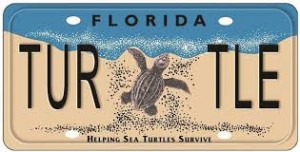
The children of Room 14, Oratia District Primary School, in West Auckland, New Zealand, with the help of their teacher Cheryl Hartnell, recently learned about sea turtles and the threats they face. They crafted turtle shells as a class and each child took a scute to write a message and create a collage about dangers to turtles. This was based on a Sea Turtle Conservancy idea!
We LOVE when you share your sea turtle projects with us! For a chance to be featured on STC’s blog, please submit photos and stories to Lexie at lexie@conserveturtles.org.
For more ideas, check out STC’s Kids Corner page online for sample activities, quizzes, artwork and more! Keep up the great work, turtle fans!
 Knocking out holiday shopping early is at the top of everyone’s wish lists, but what about giving back? First there was Black Friday, and then came Cyber Monday, but the growing trend this holiday season is #GivingTuesday.
Knocking out holiday shopping early is at the top of everyone’s wish lists, but what about giving back? First there was Black Friday, and then came Cyber Monday, but the growing trend this holiday season is #GivingTuesday.
#GivingTuesday is a campaign to create an international day of giving at the start of the annual holiday season. It celebrates and encourages charitable activities that support non-profit organizations.
Taking place on December 2, 2014 (the Tuesday after Thanksgiving in the US), #GivingTuesday harnesses the power of social media to inspire holiday shoppers to give to organizations in need before giving to each other. Click here to find out more about #GivingTuesday.

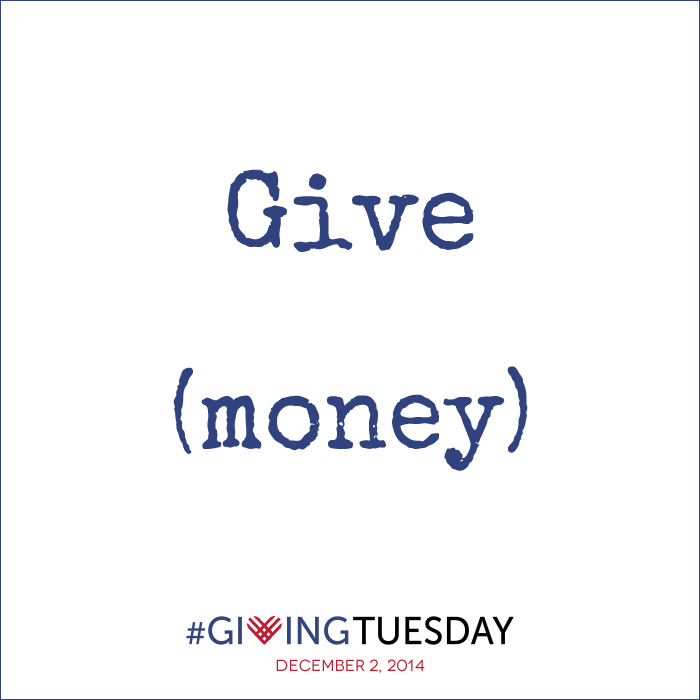

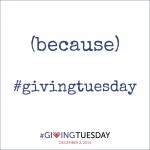
The campaign has launched a movement that has engaged well over 10,000 individuals, cities, and organizations worldwide, and STC is proud to be included. Last year was the first year that STC participated in #GivingTuesday and we raised almost $5,000 for sea turtle conservation efforts!
This year, STC invites you to donate to help make improvements to our station in Tortuguero, Costa Rica, the most important nesting location for green turtles in the Western Hemisphere. Our team has been conducting research and conservation programs there for more than 55 years.
This building is the only original building remaining onsite and has been facing the humid, salty climate of Tortuguero for 20 years. Immediate repairs to the station are needed to keep our researchers and volunteers safe and dry while they monitor and protect this critical nesting beach.
Click here to watch a video about STC’s #GivingTuesday goal this year.
For every dollar raised on December 2nd, 2014, STC’s Board of Directors has generously offered to match up to $15,000. Help turn $15,000 into $30,000 for the research, education, advocacy and protection of sea turtles!
Donations can be made on STC’s website on December 2nd to count towards the goal and the matching gift. Click here to make a donation!
Want more ways to double or even triple your impact? See if your company will match your donation by using https://doublethedonation.com/giving-tuesday! Just click this link and search for your company. You’ll find information on whether a match is provided and what the next step is. Company matching gifts are an easy, free way to make your donation to Sea Turtle Conservancy go even further.
Along with STC’s #GivingTuesday goal, we’re encouraging our supporters to make their voices heard on social media.
Let STC know what you’re doing on #GivingTuesday by sharing your story on Facebook, Twitter and Instagram. Make sure to use the hashtags #GivingTuesday and #unselfie, and don’t forget to tag us. Click to follow us on Facebook, Twitter and Instagram.
Giving back has the power to bring us all together regardless of locations, beliefs or cultures. Join forces with the rest of the world this holiday season and let’s make a difference!
There was no shortage of excitement in this year’s Tour de Turtles (TdT) marathon! This was the seventh consecutive year that Sea Turtle Conservancy (STC) followed the migration of 11 sea turtles as part of the TdT and we are continually amazed by the unending support and enthusiasm shown for our turtle “competitors!”
 The 2014 TdT included live turtle releases in Panama, Costa Rica, Nevis and Florida. This year was the first time that a rehabilitated loggerhead turtle competed in the TdT. ‘Pine Tyme‘, an 80 pound sub-adult loggerhead, was spotted struggling on the surface unable to dive and was brought to The Turtle Hospital in Marathon, FL for treatment. She was released from Sombrero Beach, The Florida Keys and marked STC’s first ever release in the Florida Keys.
The 2014 TdT included live turtle releases in Panama, Costa Rica, Nevis and Florida. This year was the first time that a rehabilitated loggerhead turtle competed in the TdT. ‘Pine Tyme‘, an 80 pound sub-adult loggerhead, was spotted struggling on the surface unable to dive and was brought to The Turtle Hospital in Marathon, FL for treatment. She was released from Sombrero Beach, The Florida Keys and marked STC’s first ever release in the Florida Keys.
Before releasing each turtle, STC scientists attached a satellite transmitter to their shell using turtle-safe epoxy or fiberglass resin. The transmitters allowed STC and the public to track the turtles as they migrated from their nesting beaches to their foraging grounds. After three months of friendly competition, we have our winners, along with “updates from the field” from the turtle competitors!
Distance Race:
WINNER – Panama Jack, 3936 km, Team Turtle & Hughes, Inc.
2nd – Calypso Blue III, 2685 km, Team Atlantis Resort
3rd – Esperanza, 1679 km, Team Treadright & Contiki Holidays
4th – Estrella, 1549 km, Team Sea Turtle Conservancy
5th – Elsa, 1445 km Team Disney Worldwide Conservation Fund
6th – Melba, 1226 km, Team Turtle Tag www.helpingseaturtles.org
7th – Shelley, 761 km Team Ripley’s Aquariums
8th – Pine Tyme, 684 km Team Turtle Hospital
9th – Anna, 672 km, Team Disney’s Vero Beach Resort & Disney’s Animal Programs
10th – Coco, 593 km & 11th – Sugar, 517 km, both Team Four Seasons Resort Nevis
People’s Choice Award:
WINNER – Calypso Blue III
2nd – Shelley
3rd – (TIE) Esperanza and Panama Jack
5th – Pine Tyme
6th – Elsa
7th – Coco
8th – Estrella
9th – Anna
Updates from our competitors:
1ST PLACE – PANAMA JACK
Species: Leatherback
Release site: Punta Rincon Beach, Panama
Sponsor: Turtle & Hughes, Inc.
Distance traveled: 3936 km.
Update from the Field: Hey everyone, Panama Jack here! Good golly, I just can’t believe I won the Tour de Turtles! I was just splishing and splashing all over the place trying to spread the word about the importance of sea turtle friendly lighting. After I left Punta Rincon Beach in Panama, I made my way over to Mexico, where I heard there were lots of yummy jellyfish for me to snack on! As you can see, I’m a pretty big girl so it’s important that I eat lots and lots of jellyfish to maintain all this energy! Now that the marathon is over, I think I’ll just hang out in the Gulf of Mexico enjoying a nice, belly-filling buffet! Thanks for cheering me on!
 2ND PLACE – CALYPSO BLUE III
2ND PLACE – CALYPSO BLUE III
Species: Leatherback
Release site: Soropta Beach, Panama
Sponsor: Atlantis
Distance traveled: 2685 km.
Update from the field: Calypso Blue III checking in! Phew, I’ve already swam over a thousand miles but I’m not stopping anytime soon! I spent most of the marathon cruising through the Gulf of Mexico, off the coast of Louisiana. I even managed to stop by Bourbon Street in New Orleans to have some fun! Throughout my travels, I’ve been telling all my marine friends about how excited I am to have my migration tracked and swim for the cause of commercial trawl fisheries. Louisiana is the largest producer of shrimp in the U.S. which means there are tons of shrimp nets in this very area. Unfortunately, Louisiana hasn’t fully enforced the use of Turtle Excluder Devices (TEDs) on their nets. I had to get stern with a couple of fishermen but quickly befriended some that agreed to compromise with me! I think I’m going to head out of the area now just to be safe… Thanks to my friends at Atlantis for always having my shell!
3RD PLACE – ESPERANZA
Species: Green
Release site: Tortuguero, Costa Rica
Sponsor: Contiki Holidays & TreadRight Foundation
Cause: Egg Harvest for Consumption
Distance Traveled: 1679 km.
Update from the Field: Hola, mis amigos! Esperanza’s back to check in with my loyal fans and give a shout out to my sponsors at Contiki and TreadRight Foundation. Without their help and the support of my fans, there’s no way I would’ve found the speed to swim all the way up the ranks from 7th place to 3rd place! Afterall, don’t forget that esperanza is Spanish for hope and – against all odds -I made it onto the winners’ podium! Even though I had quite the rough start to the race with a poacher digging up my nest and stealing my eggs, my friends at STC were able to save the day and rebury my precious eggs, which just hatched in September! Thanks to everyone who cheered me on and helped raise support for the many threats my species face, especially poaching. I couldn’t have done it without you! Adios!
4TH PLACE – ESTRELLA
Species: Hawksbill
Release site: Tortuguero, Costa Rica
Sponsor: Sea Turtle Conservancy (STC)
Distance Traveled: 1549 km.
Update from the Field: Greetings, humans. Estrella here. According to my calculations, I did not swim far enough to qualify for the Tour de Turtles winner podium. Nonetheless, it’s been quite the journey! Throughout my travels, I’ve been collecting research and data off the coast of Nicaragua and what I’ve found was quite peculiar… The number of turtles that I encountered in the area was very limited. These findings may be due to the fact that it is actually legal in parts of Nicaragua to capture and consume turtles as they’re apart of the natives’ diet. Raising awareness about such issues and enforcing policies will hopefully help get my fellow turtles (and me!) off the endangered species list. Well, I’m going to kick it into high gear now and try to swim past Nicaragua… I certainly wouldn’t want to end up as someone’s dinner!
5TH PLACE – ELSA
Release site: Disney’s Vero Beach Resort
Sponsor: Disney Worldwide Conservation Fund
Distance Traveled: 1445 km.
Update from the Field: Hello there peasants! Yes, I am Elsa, named after the queen from Disney’s Frozen. I’m here to report back to my original kingdom at Disney’s Vero Beach to discuss some of the royal duties I’ve partaken in since I left my sand castle in July. My duties took me from Vero Beach to Key Largo to Cuba, and I recycled and picked up trash and other marine debris along the way. It’s only right that the Queen pays her respects to the ocean. Naturally, I ran into some issues when trying to eat dinner the other night and mistook a plastic grocery bag for a delicious jellyfish. This is a situation that could be avoided by recycling plastics and using reusable bags. Wish me luck, I’m off to conquer my next kingdom… The Bahamas!
6TH PLACE – MELBA
Species: Loggerhead
Release site: Melbourne Beach, FL
Sponsor: FL Sea Turtle License Plate
Distance Traveled: 1226 km.
Update from the Field: Aloha dudes and dudettes! Melba here. Because of the gnarly waves I tried to catch while swimming, I accidentally moved all the way down from 3rd place to 6th place… But the journey was absolutely tubular! I met some fellow surfer chicks along the way and took the opportunity to teach them about a totally important cause—water quality, dude! They promised me they would work together to try and prevent oil spills and urban run-off caused by fertilizers and other chemicals so that we can safely enjoy the stellar surf for years to come! But I’m off to celebrate my Tour de Turtles success with some chill loggerhead ladies… I might even buy myself one of those rad sea turtle license plates for my carapace! Catch ya on the flip side dudes!
7TH PLACE – SHELLEY
Species: Loggerhead
Release site: Archie Carr Wildlife Refuge
Sponsor: Ripley’s Aquariums
Distance Traveled: 761 km.
Update from the Field: Hello darlings! You all know me as Shelley, the turtle with levels of glamour that Vogue couldn’t even handle. I won’t lie, being without my glam squad and entourage these past few months was rough but I knew my migration was raising awareness about the issue of commercial longline fisheries, and that is important. I think of the ocean as my runway and plan to continue swimming through it with grace and poise. How can I do that if I have to worry about being caught up in longline fishing? Luckily, I didn’t come across any during my travels, probably because my fabulous sponsors at Ripley’s Aquariums have been cheering me on. Even though I didn’t win the race, I’m hoping there is still a chance at a tiara. Ciao, bellas!
8TH PLACE – PINE TYME
Species: Loggerhead
Release site: Marathon, Florida Keys
Sponsor: The Turtle Hospital
Distance Traveled: 684 km.
Update from the Field: For a previously injured turtle, I’ve come a long way! Mostly thanks to my great friends at The Turtle Hospital. After gaining my strength back, I traveled over 400 miles from Marathon, Florida to my current location right outside the Dry Tortugas National Park. This national park is about 70 miles off the coast of Key West and was established to protect the island and marine ecosystems. I had to duck out of the way of several speeding boats along the way so now I’m just trying to steer clear of the ferries touring the place. As a rehabilitated turtle who was also the last to enter the race, I knew I couldn’t afford another setback like a boat strike so now I’m just trying to find a nice, calm place to feed. I honestly can’t even believe I made it this far when just several months ago I was gassy and floating bottom up at The Turtle Hospital! Thanks to everyone who helped cheer me on during the marathon!
9TH PLACE – ANNA
Species: Loggerhead
Release site: Disney Vero Beach Resort (DVBR)
Sponsor: Disney Animal Programs & DVBR
Distance Traveled: 672 km.
Update from the Field: Hi friends, Anna here! I successfully made my way all the way down the Florida coastline and decided to spend some time in Florida Keys. Everything during the marathon went quite swimmingly, except for this one huge storm that got me a little off track last month. I ended up along the shores of Miami, which was a very interesting place indeed. One thing I noticed is that their beachfront hotels and clubs had so many bright lights on, you could probably see them from space! I knew better and wasn’t distracted by their glow but let’s just hope my friends don’t end up drawn towards the lights when they come up to nest! After my little visit to South Beach, I got worn out from signing autographs for all my Frozen fans and set off towards Key West to relax where I plan to stay. Check back with me soon!
10TH PLACE – COCO
Species: Hawksbill
Release Site: Pinney’s Beach, Nevis
Sponsor: Four Seasons – Nevis
Distance Traveled: 593 km.
Update from the Field: Oh, hello there. I didn’t realize this interview was going to be published. I don’t really do well with large groups. Sorry, erm… How about a little joke to break the ice? So, um, I’m on my way to St. Kitts from Nevis and I come across what I thought were some fellow hawksbills. I’m shy enough as it is so I really had to work up the nerve to approach these guys. I try to make conversation, which is rare for me, and I’m getting no reply. I start to get more nervous as their silence lengthens. Was it something I said? Do I have a piece of sponge in my teeth? Finally, I realize I’d been talking to floating coconuts the whole time… That embarrassing encounter certainly did nothing to help me get over my social anxieties. I was also hoping for a confidence boost by winning the Tour de Turtles race, but then I just got so nervous and I decided to stay close to home where I’m most comfortable. There’s nothing wrong with last place, especially since I know the great people at Four Seasons Nevis will always cheer for me, no matter what!
11TH PLACE – SUGAR
Species: Hawksbill
Release site: Pinney’s Beach, Nevis
Sponsor: Four Seasons – Nevis
Distance Traveled: 517 km.
Update from the Field: Hi friends! My name is Sugar and I’m the sweetest hawksbill you’ll ever meet! During the Tour de Turtles, I got some slack from a few mean turtles about my slow pace but I couldn’t help that I enjoyed the beautiful waters of the Caribbean so much! Who said there’s anything wrong about being on island time? The water near St. Kitts is especially warm, I just hope it’s not due to climate change! I promise to do some investigating while I’m here and raise awareness about this potential threat. Now excuse me while I go enjoy a deliciously sweet drink with my friends at the Four Seasons Resort Nevis to celebrate the end of Tour de Turtles!
****************************************************************************
Sea Turtle Conservancy would like to give a big THANK YOU to all of our great turtle sponsors for this year’s Tour de Turtles — Four Seasons Resort, Nevis — Disney’s Animal Programs — Disney’s Worldwide Conservation Fund — Disney’s Vero Beach Resort — Turtle & Hughes, Inc. — Atlantis Resort — Ripley’s Aquariums — Contiki Holidays — The TreadRight Foundation — The Turtle Hospital — and Florida’s Sea Turtle License Plate.
Sea Turtle Conservancy (STC) would like to give a special congratulations to the winners of our 2015 Sea Turtle Scenes Calendar Contest! This year we received a record-breaking amount of entries and all the photos were truly phenomenal. Thank you to everyone who took the time to enter!
The winning photographs will be featured in STC’s 2015 Sea Turtle Scenes Calendar, which will be available online in our gift shop in November—just in time for the holidays! Thank you to all of our participants who made this year’s selection exciting and especially difficult. If you missed out on this one, look out for the 2016 photography contest next summer!
Here are the winners:
COVER PHOTO
By Courtney Huisman
Leatherback hatchlings, Bocas del Toro, Panama

JANUARY
By Hector Chenge
Kemp’s Ridley nesting , Rancho Nuevo, Mexico
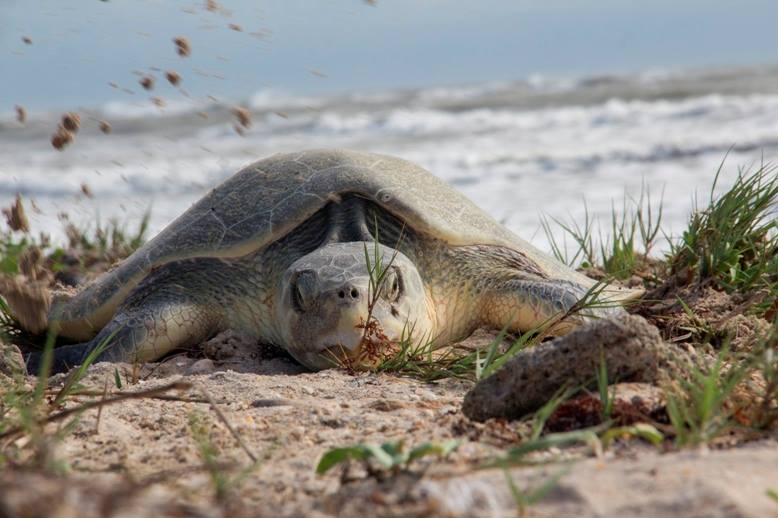
FEBRUARY
By Ben Hicks
Loggerhead hatchling in South Florida
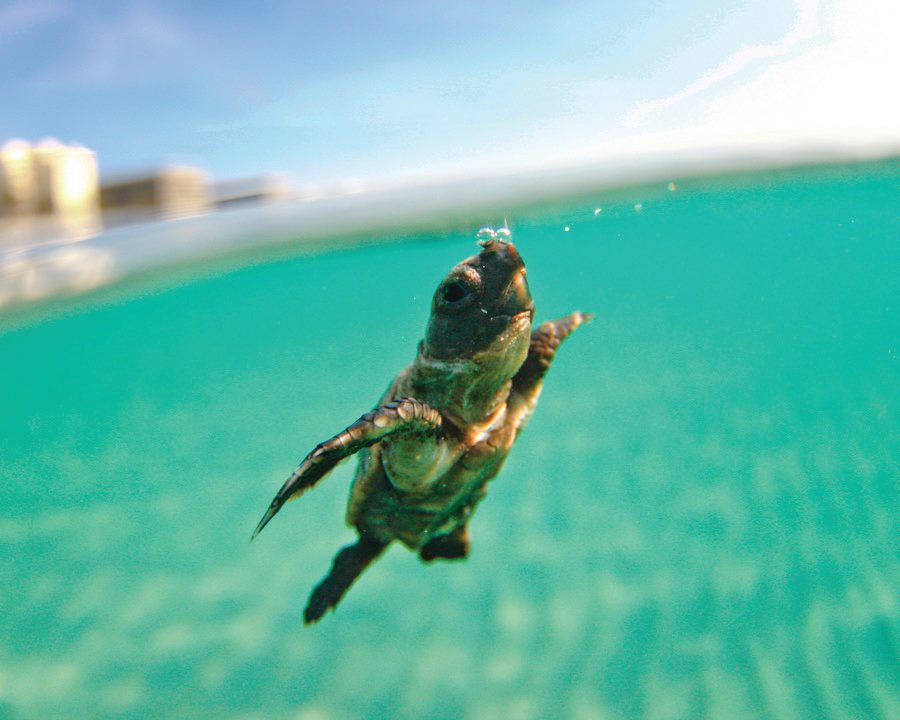
MARCH
By Karla Morales
Leatherback nesting at sunrise, El Unico Beach, Dorado, Puerto Rico

APRIL
By Jun Lao
Green sea turtle and soft corals, Apo Island
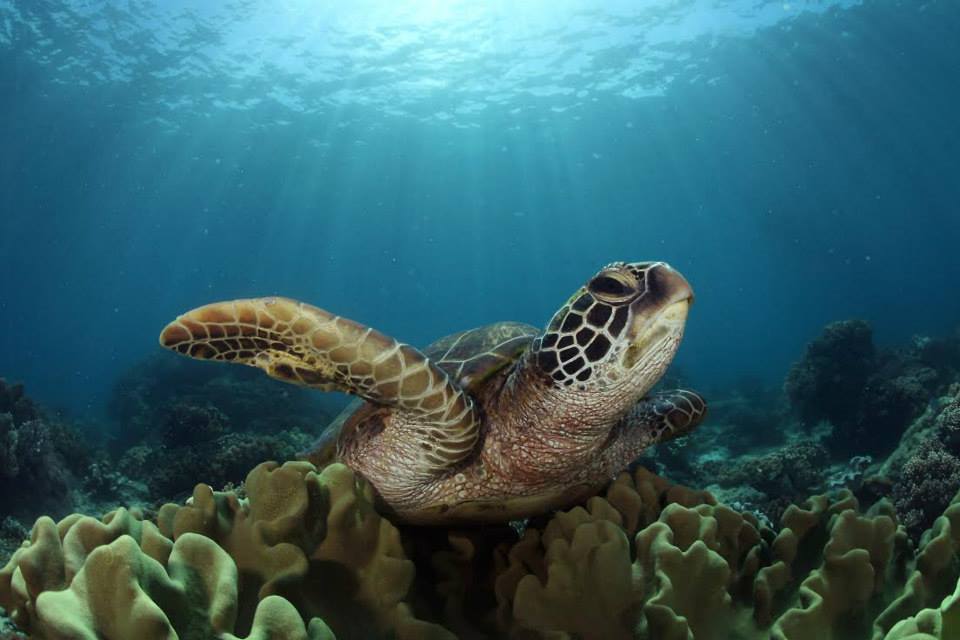
MAY
By Cristian Ramirez Gallego
Leatherback hatchling, Culebra Island, Puerto Rico

JUNE
By Ben Hicks
Green Sea Turtle, Boca Raton, Florida
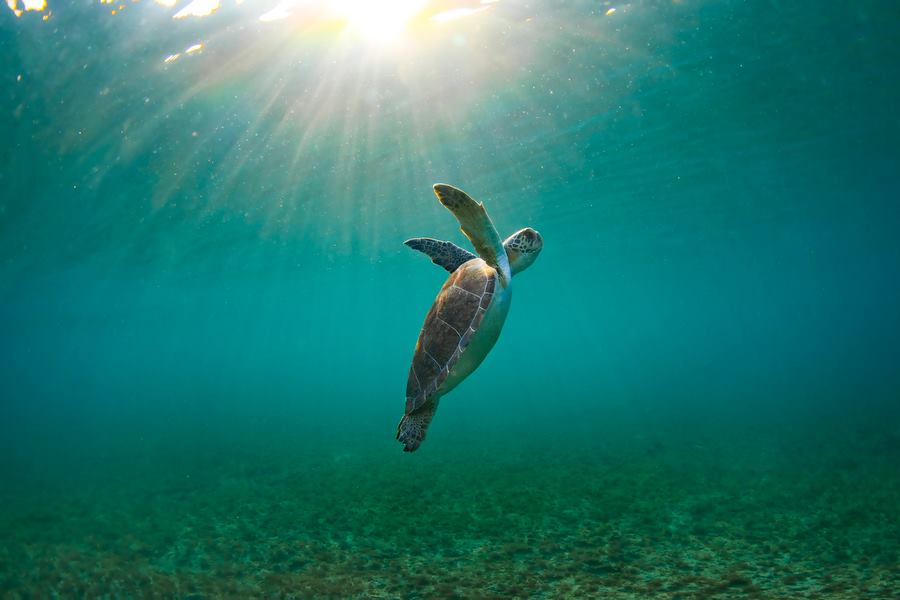
JULY
By Jason Spitz
Hawksbill, Roatan, Honduras

AUGUST
By Karla G. Barrientos-Munoz
Hawksbill nesting, Mona Island, Puerto Rico

SEPTEMBER
By Jasmine Burgan
Loggerhead Sea Turtle, Heron Island, Australia

OCTOBER
By Steven Anderson
Hawksbill sea turtle, West End, Grand Bahamas
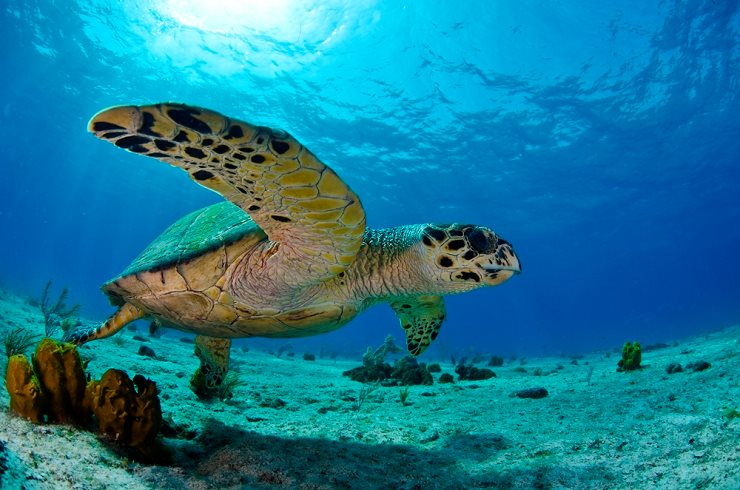
NOVEMBER
By Ulisse Donnini
Green sea turtle hatchling, Meru Betiri National Park, Indonesia

DECEMBER
By Osha Gray Davidson
Green sea turtle, Heron Island, Australia
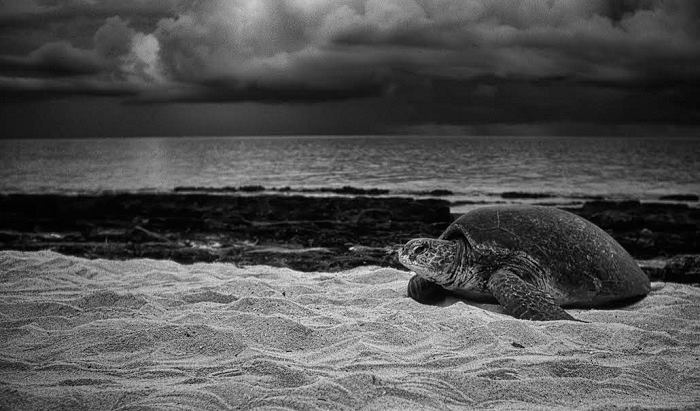
UPDATE: The Save Vanishing Species Stamp is now available for purchase online and in most US Post Offices! Click here to purchase your stamps now and support the Multinational Species Conservation Fund!
******************************************************************
Great news! The Save Vanishing Species wildlife conservation stamp will soon be available for purchase again! In 2010, the U.S. Congress authorized a Semipostal stamp for two years to raise money for the Marine Turtle Conservation Fund and the Multinational Species Conservation Fund (MSCF) for African and Asian elephants, tigers, rhinos, and great apes. Known as the wildlife conservation stamp, it depicted the image of an Amur tiger cub.
The stamp’s ultimate goal was to generate public awareness and financial support for critically important conversation efforts on behalf of endangered species worldwide, including marine turtles.
On September 20, 2011, the stamp was officially launched for public purchase at an unveiling event held at the Smithsonian National Zoological Park in Washington DC.
Proceeds from the Save Vanishing Species stamp directly benefit the Multinational Species Fund, which has provided more than 1,800 grants for endangered species, including marine turtles, over many years.
Like the famous Breast Cancer Research Semipostal stamp, the Save Vanishing Species stamp was sold at the premium cost of 55 cents, with 9 cents from each stamp purchased supporting wildlife conservation. From September 20, 2011, to December 31, 2013, stamp sales raised $2,567,000 for the conservation of all MSCF species. Unfortunately, the wildlife stamp was not marketed particularly well and wasn’t available in many post offices. It could be purchased online, but only one-quarter of the stock was sold. When the Stamp’s two-year authorization ended in 2013, there were still millions of unsold Save Vanishing Species stamps in stock!
Now the wildlife stamp has been given a second chance, thanks to the advocacy of Sea Turtle Conservancy and the other Multinational Species Coalition members, along with the support of Senators Rob Portman (OH) and Tom Udall (NM) and Congressman Michael Grimm (NY). Together, we were able to prevent the planned destruction of the 74 Million unsold tiger stamps, and new legislation has breathed life into the Vanishing Species Stamp. On September 8, a bill reauthorizing the Save Vanishing Species Stamp for another four years was passed by the House of Representatives (it had passed earlier in the Senate), which sent the measure to President Obama’s desk for certain signature. Colin Sheldon at Wildlife Conservation Society and Will Gartshore at World Wildlife Fund deserve our gratitude for their leadership of the Multinational Species Coalition and their persistence in making the stamp a reality once again.
STC will make another announcement when the stamps are available for purchase. Once they go on sale again, please buy the wildlife conservation stamps online or at your post office and spread the word to your friends! Help us Stamp Out Extinction!
To learn more about the Save Vanishing Species stamp, visit TigerStamp.com
Many Floridians work tirelessly to protect sea turtles from the many threats they face on and off the nesting beach. However, a recent coastal update shows that these majestic creatures are in danger from a phenomenon mostly beyond our control: red tide.
Satellite images from the Florida Fish and Wildlife Conservation Commission show a patchy area of red tide recently spotted in the northeast Gulf of Mexico. Red tide is a sudden increase in algae population, which often results in the sickness and death of marine life in the affected area.
According to an article by the Associated Press, this specific algal bloom stretches 100 miles from St. Petersburg to Florida’s Big Bend, where the peninsula ends and the Panhandle begins. The affected area starts a few miles off the cost and is approximately 60 miles wide.
STC is no stranger to the negative impact of red tide. Last year, STC had a rehabilitated turtle named Tampa Red participate in Tour de Turtles. Sponsored by the Tampa Bay Consortium and the Florida Aquarium, Tampa Red was injured by red tide in the Gulf of Mexico.
Loggerhead Melba was recently spotted in the area of the red tide bloom.STC is keeping a close watch on current Tour de Turtles competitors that have been spotted in the affected area. Loggerhead sea turtle Melba, now in fifth place, has been spending a lot of time off the coast of Cedar Key in the heart of the bloom.
“We should watch this closely to see if the marine animal rehabilitation facilities on the Gulf Coast of Florida begin to see a surge in strandings,” said David Godfrey, STC executive director. “There is nothing that I know of that can be done to lessen the impacts of red tide, but we could be ready with some emergency grants.”
The Sea Turtle Grant Program, which is administered by STC, has helped support facilities that have taken in sea turtles impacted by red tide in the past.
The program gave Mote Marine Laboratory a grant of over $22,000 to investigate sea turtles stranded by red tide in central west Florida in 2005. Results of that work showed that a neurotoxin in the algae called brevetoxin appeared to be the primary cause behind the strandings of sea turtles that washed up on beaches in the area.

The red tide bloom currently spotted off the coast of Florida stretches 100 miles. Photo courtesy of CTV News.
After expanding on that research, scientists now understand the effect of red tide on sea turtles and other marine wildlife is even more alarming.
Mote and the Conservancy of Southwest Florida teamed up during the 2012 and 2013 red tides in and around Pine Island Sound, along Florida’s southwest Gulf coast. The research aimed to understand the effects of red tide on Kemp’s ridley sea turtles, a critically endangered species.
According to an article by news-press.com, the study is the first of its kind to look at the effects of brevetoxin in living and free-swimming turtles.
Blood tests were run on nine Kemp’s ridley turtles, and the results showed high levels of brevetoxin as well as a protein called alpha-globulin. Increased alpha globulin is a sign of inflammation, which means these turtles may seem healthy on the outside, but there’s something serious going on inside.
Mote’s Justin Perrault, the study’s principal investigator, told news-press that Kemp’s ridley turtles are more susceptible to this toxin than other species of marine life. The toxin is absorbed and held in the tissue of filter-feeders such as tunicates, which are a staple in the diet of a Kemp’s ridley turtle.
More information is needed on the impact of brevetoxin, how long it can stay in the turtle’s system and whether it can cause long-term side effects. Likewise, Perrault said the team is looking at how this toxin can affect the reproduction process and already fragile hatchlings.
The turtles were also tracked via satellite during the study. Data showed that the sea turtles seemed to sense the red tide’s presence and actually avoided affected areas. Perrault said that the next step will be to determine how the turtles detect the toxin.
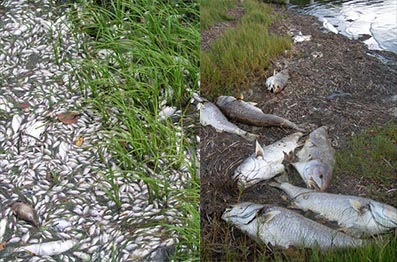
Fish are easily affected by red tide blooms, which results in mass deaths. Photo courtesy of Florida Fish and Wildlife Conservation Commission.
Red tide is negatively impacting many species of marine wildlife in Florida. According to the FWC, fish are most easily affected by red ride because their gills are directly exposed to the brevetoxin. Manatees and dolphins also feed on marine species that easily absorb the toxin, which in-turn exposes them to its harmful effects.
While the causes of red tide are not clearly understood, research is being done to develop a prediction model based on ocean currents, according to the Associated Press article. University of South Florida ocean scientist Robert Weisberg is among a team of researchers working to develop a warning system, which will track the movement of nutrients that red tide needs to thrive. The article also said that the president is asking Congress for a $6 million increase for research in red tide prediction in the 2015 budget.
 In the meantime, you can help minimize other environmental dangers to marine wildlife by recycling plastic bags and reducing other sources of marine pollution. We depend on the health of Florida’s marine ecosystem just as the species that inhabit it do. Harming sea turtles, manatees, dolphins and fish also also impacts the overall marine environment and people that rely on these marine resources for food, recreation and other ecosystem services.
In the meantime, you can help minimize other environmental dangers to marine wildlife by recycling plastic bags and reducing other sources of marine pollution. We depend on the health of Florida’s marine ecosystem just as the species that inhabit it do. Harming sea turtles, manatees, dolphins and fish also also impacts the overall marine environment and people that rely on these marine resources for food, recreation and other ecosystem services.
If you think a sea turtle has been affected or stranded by red tide, call the FWC’s 24-hour Wildlife Alert Number at 888-404-3922.
To subscribe to FWC’s Red Tide Alert Emails, visit https://public.govdelivery.com/accounts/FLFFWCC/subscriber/new
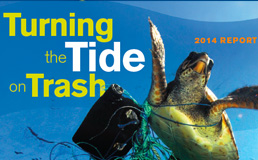 Help us turn the tide on trash! This Saturday, September 20, join us for the world’s largest volunteer effort on behalf of our ocean by participating in the Ocean Conservancy’s International Coastal Cleanup Day! This is an international event, and there are many ways you can get involved locally. If you live near a coastal community, click here to see what’s going on in your town– http://www.oceanconservancy.org/our-work/international-coastal-cleanup/clean-up-locations.html.
Help us turn the tide on trash! This Saturday, September 20, join us for the world’s largest volunteer effort on behalf of our ocean by participating in the Ocean Conservancy’s International Coastal Cleanup Day! This is an international event, and there are many ways you can get involved locally. If you live near a coastal community, click here to see what’s going on in your town– http://www.oceanconservancy.org/our-work/international-coastal-cleanup/clean-up-locations.html.
Even if there is not an official organized event near you, you can still play your part in helping to clean up our planet. Wherever you are and whatever you are doing this weekend, take a trash bag out with you and pick up litter or recyclables that you find. Click here to find all the tools you need to organize a cleanup on your own–http://www.oceanconservancy.org/our-work/international-coastal-cleanup/do-it-yourself-cleanup-tool.html
Last year, nearly 650,000 people participated in the 2013 Cleanup, with events held in 44 states and in more than 90 countries and locations around the globe.
If you plan on participating in any capacity, make sure you sign-up here and take the pledge so Ocean Conservancy can keep track of the data.
If you’re a diver, you can also sign-up for any of the Dive Against Debris events happening across the state of Florida. Click here for more info or check out host Tampa Bay Green Consortium’s website.
Marine debris is especially a problem in Florida and affects human health and safety, endangers our marine wildlife and costs Florida millions in wasted resources and lost revenue each year. One of the biggest impacts to marine debris in Florida is the impact to our sea turtles, one of our oldest creatures on Earth. These beautiful marine creatures are very vulnerable to plastics and other marine debris. They commonly swallow plastic bags, mistaking them for jellyfish. They are often found off the Florida coasts entangled in discarded nets and fishing lines, and are frequently found with ingested fish hooks. Florida is a large nesting ground for sea turtles and hatchlings are also affected by marine debris. When hatchlings move towards the water, physical objects like trash and marine debris, endangering their lives, often obstruct them.
We need your help to solve this problem. For nearly three decades, volunteers with Ocean Conservancy’s International Coastal Cleanup® have picked up everything imaginable along the world’s shorelines: cigarette butts, food wrappers, abandoned fishing gear and even automobiles and kitchen appliances.
Some Florida cleanup events taking place from 9am – 12pm on Saturday, September 20:
Cape Coral:
Deerfield Beach:
Ft. Lauderdale:
Ft. Myers:
Hollywood:
Jacksonville:
Melbourne Beach:
Pompano Beach:
Ruskin:
Sanibel:
Tampa:
Thonotosassa:
**For more locations, please visit http://www.oceanconservancy.org/our-work/international-coastal-cleanup/clean-up-locations.html
WHAT: Tampa Bay Green Consortium (TBGC), Florida’s regional coordinator for Project Aware’s “Dive Against Debris” Program, would like to invite you to participate in a statewide dive cleanup in September to support Ocean Conservancy’s International Coastal Cleanup Day, which takes place Sept. 20. In partnership with volunteer organizations and individuals around the globe, Ocean Conservancy’s International Coastal Cleanup engages people to remove trash from the world’s beaches and waterways. “Dive Against Debris” is organized worldwide by the Project AWARE Foundation, a nonprofit organization that mobilizes divers to protect the ocean.
TBGC is asking all Florida dive shops and dive clubs to organize and conduct a local marine debris cleanup event, using this Florida Marine Debris Data Card, and record all debris data collected. Once completed, we ask that you submit your data back to TBGC so we can aggregate Florida’s findings for submission to the Ocean Trash Index. This data will be used to inform, persuade and empower Florida policy makers and other stakeholders to establish and improve integrated solid waste management practices. In addition, the data will provide an invaluable location-by-location and item-by-item snapshot of what is polluting our Florida beaches and waterway, identifying debris hot spots and inform policy solutions to the marine debris problem.
Since 2009, nearly 152,000 volunteer divers and supporters in Florida have participated in this annual cleanup, with over 2 million pounds of marine debris collected along the Florida coast. We want you to be part of this event and support marine conservation!
WHEN: Anytime in the month of September (International Coastal Cleanup Day is September 20th, 2014). The Florida Marine Debris Data Card must be submitted to partnership@tampabaygreenconsortium.org by September 30th, 2014.
WHERE: At your local Florida beach, dive site, waterway, reef, or other body of water. OR join TBGC for one of their organized clean-up events: http://tampabaygreenconsortium.org/?p=1183 You can also learn more about their Dive Against Debris Events here.
 WHY: Marine debris – a politically correct way to say “our trash in the ocean” – makes its way to our underwater environments by the tons. Ocean trash is a problem in Florida which affects human health and safety, endangers our marine wildlife and costs Florida millions in wasted resources and lost revenue each year. One of the biggest impacts to marine debris in Florida is the impact to our sea turtles, one of our oldest creatures on Earth. These beautiful marine creatures are very vulnerable to plastics and other marine debris. They commonly swallow plastic bags, mistaking them for jellyfish. They are often found off the Florida coasts entangled in discarded nets and fishing lines, and are frequently found with ingested fish hooks. Florida is a large nesting ground for sea turtles and hatchlings are also affected by marine debris. When hatchlings move towards the water, physical objects like trash and marine debris, endangering their lives, often obstruct them.
WHY: Marine debris – a politically correct way to say “our trash in the ocean” – makes its way to our underwater environments by the tons. Ocean trash is a problem in Florida which affects human health and safety, endangers our marine wildlife and costs Florida millions in wasted resources and lost revenue each year. One of the biggest impacts to marine debris in Florida is the impact to our sea turtles, one of our oldest creatures on Earth. These beautiful marine creatures are very vulnerable to plastics and other marine debris. They commonly swallow plastic bags, mistaking them for jellyfish. They are often found off the Florida coasts entangled in discarded nets and fishing lines, and are frequently found with ingested fish hooks. Florida is a large nesting ground for sea turtles and hatchlings are also affected by marine debris. When hatchlings move towards the water, physical objects like trash and marine debris, endangering their lives, often obstruct them.
Media: When you have your event scheduled, contact us so we can promote your event and dive shop/club in our weekly media release to all Florida papers and TV stations.
About Tampa Bay Green Consortium
Through strategic alliances, partnerships and people, the Tampa Bay Green Consortium, a 501(c) non- profit organization, provides the guidance, resources, and tools to help increase environmental awareness within the community to promote the sharing of knowledge, people and resources needed for environment projects focusing on sea turtle conservation, marine debris, and environmental education.
![]() Sea Turtle Conservancy (STC) is excited to have our friends at Atlantis, Paradise Island sponsor a turtle in this year’s Tour de Turtles for the fourth year in a row! The turtles they sponsored the last two years, Calypso Blue I and Calypso Blue II, won their respective marathons and traveled over 6,400 miles both years. Atlantis is hoping the streak will continue this year with its turtle, leatherback Calypso Blue III.
Sea Turtle Conservancy (STC) is excited to have our friends at Atlantis, Paradise Island sponsor a turtle in this year’s Tour de Turtles for the fourth year in a row! The turtles they sponsored the last two years, Calypso Blue I and Calypso Blue II, won their respective marathons and traveled over 6,400 miles both years. Atlantis is hoping the streak will continue this year with its turtle, leatherback Calypso Blue III.
The lucky name originated from a Facebook naming contest. Debra Erickson, executive director of the Atlantis Blue Project Foundation, said if Calypso Blue III wins this year “it would be like winning the Triple Crown.”

Calypso Blue III is swimming to raise awareness of commercial trawl fisheries.
Atlantis is a resort and water park in The Bahamas that is celebrating its 20th anniversary this year. It encompasses 14 lagoons and eight million gallons of salt water that contain more than 50,000 aquatic animals as well as caves, coral formations and underwater ruins that showcase many types of marine life from sea turtles and sharks to manta rays and moray eels.
Atlantis uses its vast collection for education and conservation efforts through the Atlantis Blue Project. “The Atlantis Blue Project started over seven years ago with the goal of using scientific research, education and public outreach to help protect our oceans,” Erickson said. “The project’s focus today is saving sea species and their habitats throughout The Bahamas and the Caribbean seas.”
Atlantis’ involvement in Tour de Turtles is part of that conservation effort. Erickson said that after 15 years of sea turtle display, breeding and conservation, Atlantis began to look for a way to expand its sea turtle conservation efforts through both research and public education and communications.
Erickson said that after 15 years of sea turtle display, breeding and conservation, Atlantis began to look for a way to expand its sea turtle conservation efforts through both research and public education and communications.
It was determined that Tour de Turtles was the perfect program to reach those goals, according to Erickson, because it “enables scientists to collect invaluable data on sea turtle migration while at the same time educating the public on the challenges that sea turtles face from ocean debris to boat strikes.”
Atlantis has continued to sponsor a turtle in the marathon for the past four years because of the program’s high level of engagement, Erickson said. It enables many individuals to follow sea turtles’ migration on a daily basis and spread the information through social media as well as allowing scientists to use the data collected to better understand and manage sea turtle species.
Erickson said, “We are looking forward to this year’s Tour de Turtles and seeing the results at the end of the race. The program allows Atlantis to continue its commitment to sea turtle conservation and gives us an opportunity to engage our guests and involve them in helping to preserve sea turtles.”
In addition to Tour de Turtles, Atlantis actively participates in other sea turtle conservation efforts. Each year, Atlantis’ Aquarists collect over 1,200 eggs laid by female turtles on its beach, place the eggs in replica nests at its Fish Hospital and release the young out on the beach once they hatch.
STC would like to thank Atlantis for its constant support! We can’t wait to see if Calypso Blue III carries on the winning streak.
Sea Turtle Conservancy (STC) is looking for talented photographers for our seventh annual Sea Turtle Calendar Contest! The sea turtle calendar reminds people throughout the year that sea turtles need our help to survive, and it includes important sea turtle dates like World Sea Turtle Day. Contributing to the calendar is a great way to help spread the word about sea turtle conservation.
We had an amazing calendar filled with beautiful images last year, and we are looking forward to the great submissions for next year’s calendar. We are only accepting photograph submissions for the 2015 calendar. Submissions should be sent to conserveturtles@gmail.com no later than September 30, 2014 and must follow the criteria below:
• Include a brief description of the image as well as the
location and date it was taken and the photographer’s name.
• Image must be submitted by the photographer or
include written permission for submission from the photographer.
• Image must show turtles in a natural setting and follow turtle-friendly guidelines (i.e. no flash images of nesting sea turtles, no images of people handling sea turtles, etc.)
• Image must be high resolution (300 dpi or more).
To view last year’s calendar, click here.
The winners will be announced in STC’s monthly e-newsletter (Sea Turtle Talk), website and Facebook. Each winner will receive two free calendars and an STC logo t-shirt!
By submitting your image to conserveturtles@gmail.com before September 30, 2014, you are granting STC rights to use your photography for the 2015 Sea Turtle Scenes Calendar and other STC education initiatives. STC will not distribute your image without your written permission.
If you’re interested in submitting a photo, please include the Photography Permission Form in your submission.
For more information view our 2015 Calendar Contest flyer.
Sea Turtle Conservancy (STC) began its 2014 Tour de Turtles (TdT) with a live sea turtle release on July 27th at the Barrier Island Center, located in the heart of the Archie Carr National Wildlife Refuge in Melbourne Beach, Florida. The marathon is a fun and educational journey through the science of sea turtle migration using satellite telemetry. This year 12 turtles, who are each swimming to raise awareness about a sea turtle cause, are competing to see who will travel the farthest in the next three months.
Meet the competitors below!
Name: Panama Jack
Species: Leatherback
Release site: Punta Rincon Beach, Panama
Sponsor: Turtle & Hughes, Inc.
Cause: Light pollution
Stats: 145.0 cm in curved carapace (shell) length and 108.0 cm in curved carapace width
Fun Fact: Returned and nested again on July 15.
Read my full bio, adopt me, or view my migration map!
Name: Calypso Blue III
Species: Leatherback
Release site: Soropta Beach, Panama
Sponsor: Atlantis
Cause: Commercial Trawl Fisheries
Stats: 144.6 cm in curved carapace (shell) length and 108.0 cm curved carapace width
Fun Fact: Laid 53 fertile eggs and 36 yokeless eggs.
Read my full bio, adopt me, or view my migration map!
Name: Esperanza
Species: Green
Release site: Tortuguero, Costa Rica
Sponsor: TreadRight & Contiki
Cause: Egg Poaching
Stats: 104.9 cm in curved carapace
Fun Fact: The morning after she laid her eggs, her nest was poached and eggs stolen. Luckily, the police caught the poacher and returned the eggs to STC’s team, who quickly and carefully reburied them in a new location.
Read my full bio, adopt me, or view my migration map!
Name: Estrella
Species: Hawksbill
Release site: Tortuguero, Costa Rica
Sponsor: STC
Cause: Illegal Shell Trade
Stats: 80.9 cm in curved carapace length
Fun Fact: Estrella is the first hawksbill from Tortuguero to compete in the TdT!
Read my full bio, adopt me, or view my migration map!
Name: Melba
Species: Loggerhead
Release site: Melbourne Beach, FL
Sponsor: FL Sea Turtle License Plate
Cause: Water Quality
Stats: 101.8 cm in curved carapace length, 88.5 cm in curved carapace width
Fun Fact: Melba ranks in the Top 5 largest loggerheads STC has ever released and has one of the largest heads.
Read my full bio, adopt me, or view my migration map!
Name: Shelley
Species: Loggerhead
Release site: Melbourne Beach, FL
Sponsor: Ripley’s Aquariums
Cause: Commercial Longline Fisheries
Stats: 89.9 cm in curved carapace length and 85.3 cm in curved carapace width
Fun Fact: Shelley is the 22nd loggerhead STC has released from the Archie Carr National Wildlife Refuge!
Read my full bio, adopt me, or view my migration map!
Name: Anna
Species: Loggerhead
Release site: Disney’s Vero Beach Resort (DVBR)
Sponsor: Disney’s Animal Programs & DVBR
Cause: Light Pollution
Stats: 84.7 cm in curved carapace length, 76.0 cm in curved carapace width
Fun Fact: Anna is named after the character from Disney’s “Frozen.”
Read my full bio, adopt me, or view my migration map!
Name: Elsa
Species: Loggerhead
Release site: Disney’s Vero Beach Resort
Sponsor: Disney Worldwide Conservation Fund
Cause: Marine Debris
Stats: 100.4 cm in curved carapace length, 90.7 cm in curved carapace width
Fun Fact: Elsa is named after the character from Disney’s “Frozen.”
Read my full bio, adopt me, or view my migration map!
Name: Coco
Species: Hawksbill
Release site: Pinney’s Beach, Nevis
Sponsor: Four Seasons Resort Nevis
Cause: Illegal Shell Trade
Stats: 88.9 cm in curved carapace length
Fun Fact: Coco’s name was selected and voted on by Four Seasons’ Instagram and Facebook followers.
Read my full bio, adopt me, or view my migration map!
Name: Sugar
Species: Hawksbill
Release site: Pinney’s Beach, Nevis
Sponsor: Four Seasons Resort Nevis
Cause: Climate Change
Stats: 82.0 cm in curved carapace length, 76.5 cm curved carapace width
Fun Fact: Sugar already had flipper tags when STC found her nesting. It was determined that she was originally tagged by the Nevis Turtle Group in 2007!
Read my full bio, adopt me, or view my migration map!
Name: Pine Tyme
Species: Loggerhead (sub-adult)
Release site: Sombrero Beach, FL
Sponsor: The Turtle Hospital
Cause: Boat Strikes
Stats: 80 lbs.
Fun Fact: Pine Tyme is a rehabbed turtle who was rescued near Big Pine Key, FL. She is currently being treated for severe gas in her intestines, which prohibits her from diving for food.
Read my full bio, adopt me, or view my migration map!